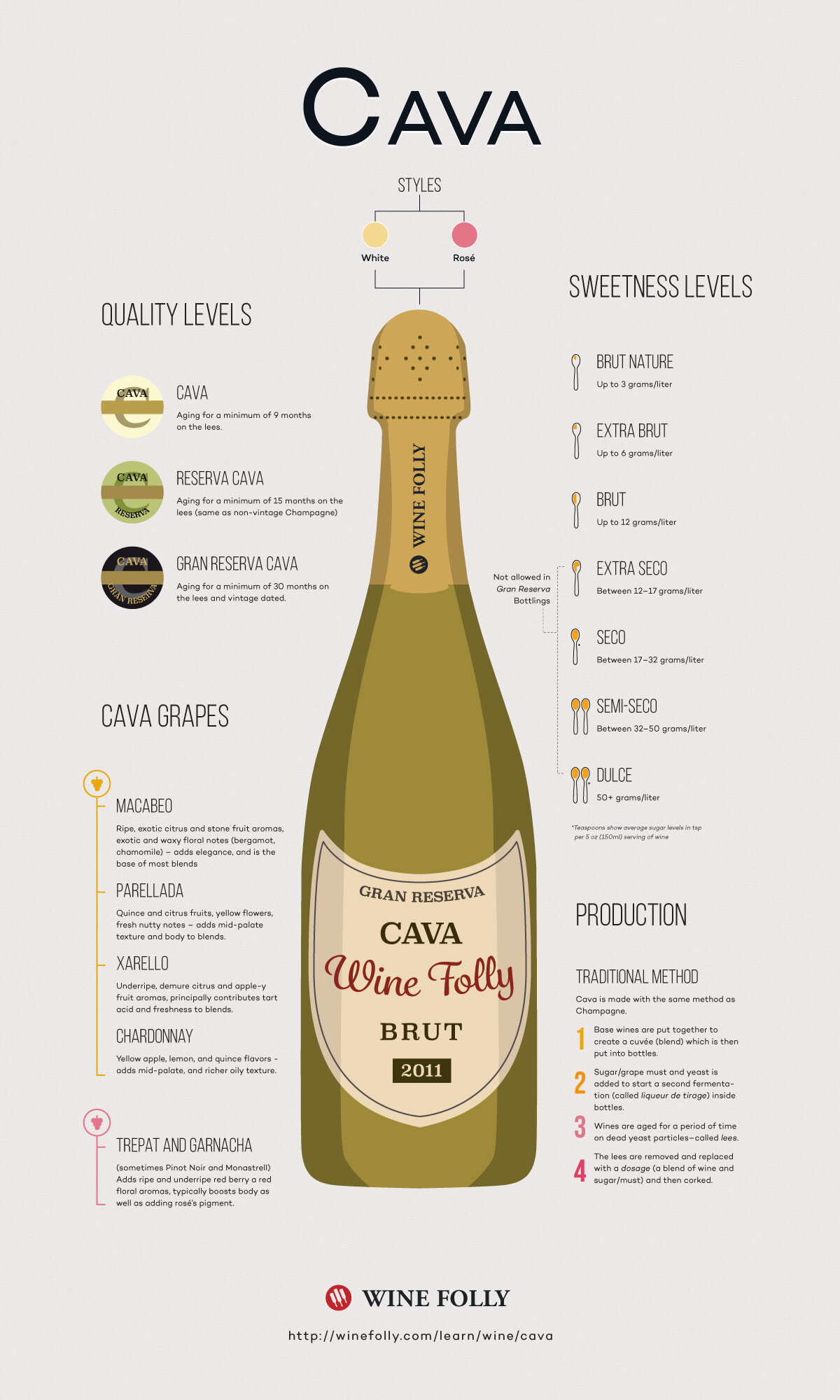Champagne Vs. Cava: What You Need To Know
Those of us who love wine know that comparing Prosecco to Champagne is like comparing apples to oranges. NSYNC to the Backstreet Boys. Michelle Williams the actress to Michelle Williams the butterfly on The Masked Singer ( I KNOW it’s her. I just know it!) However, what is a little more complicated to tell apart are the differences between Champagne and its Spanish counterpart, Cava. Though made from totally different grapes and in totally different regions of the world, these two sparkling wines have quite a bit in common. Let’s check out their stats:
Champagne
Country of Origin: France
Grapes: Pinot Noir, Pinot Meunier, Chardonnay
Method: Méthode Champenoise
In Bottle Fermentation: Yes
Bubble Size: Small and Fine
Sweetness level: Brut Nature (driest) to Doux (sweetest with up to 50+ g of residual sugars per liter)
Cava
Country: Spain
Grapes: Macabeo, Parellada, Xarello (sometimes Pinot Noir and Chardonnay are used)
Method: Traditionnelle (Totally the same as Méthode Champenoise but much like only sparkling wine made in Champagne can be called Champagne, only Champagne can be labelled as using Method Champenoise. Everything else must be labeled using something different. In Cava’s case, it’s Traditionnelle.
In Bottle Fermentation: Yes
Bubble Size: Small and Fine
Sweetnes Level: Brut Nature to Dolce (also with up to 50+ grams of residual sugar per liter)
So….
as you can see, Champs and Cavs have a lot in common. The one thing that you’ll find that REALLY sets them apart is price point. There are many affordable options in both categories. However, it is WAY more likely that you’d be able to find a good bottle of Cava at your local wine store for $15 than a good bottle of Champagne for $15. The lowest you could prob find a good bottle of champagne for would be in the $30-range. And if any of you out there HAVE found a good bottle of Champagne for $15, heck, even $20, let a girl know!
Have you had a Cava that you loved recently?









